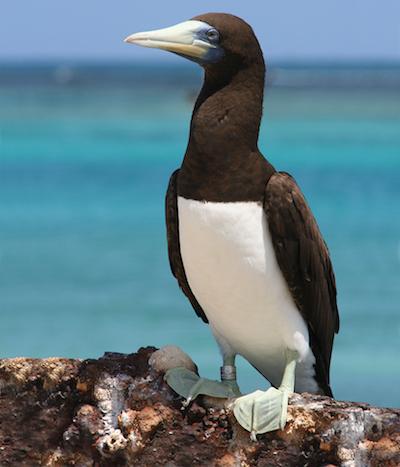
In a possible sign that climate change is altering bird territories, Brown boobies are now nesting in Channel Islands National Park/Duncan Wright via NPS
They were not supposed to be there, but they were: More than 100 brown-hooded, white-breasted seabirds, along with four nests, at chilly Channel Islands National Park off California's coast. This was not balmy Baja California, which normally is the northern-most range for tropics-loving Brown boobies, but rather a windswept chain of islands with average high temperatures in the mid-60s and brisk water temperatures in the 50s.
While the islands that comprise the national park have been called the "Galapagos of North America," Brown boobies are still an unusual addition. Yet their move north could be among the first of many by bird species trying to adapt to warming climates brought on by the world's growing greenhouse gas emissions.
“This discovery, once again, demonstrates the importance of the Channel Islands as critical seabird habitat,” park Superintendent Russell Galipeau said last November when the birds were spotted on Santa Barbara Island. “This makes for a total of 14 species of breeding seabirds, birds that rely upon the rich marine resources and the isolation of these offshore islands to provide food and undisturbed nesting grounds safe from predators.”
But the appearance of Brown boobies that far north might also signal the impact climate change is having on bird species. An expansive study on Birds and Climate Change that the National Audubon Society and National Park Service released Wednesday projects an upheaval of the species you're accustomed to seeing in national parks. Some species will move out, others will move in. On average, there could be up to a 25 percent turnover of bird species in some national parks by 2050. For instance:
* Bald eagles might not be seen in Grand Canyon National Park in Arizona during the winter;
* Mountain bluebirds might no longer be found in the mixed-grass prairies of Badlands National Park in South Dakota;
* Clark's nutcrackers could be vanishing from the pine forests Yellowstone National Park in Wyoming;
* Red-breasted nuthatches could disappear from the hardwood forests of Acadia National Park in Maine, and;
* Anhingas might not only be in decline at Everglades National Park in Florida, but they might also find temperatures at Grand Canyon more to their liking.
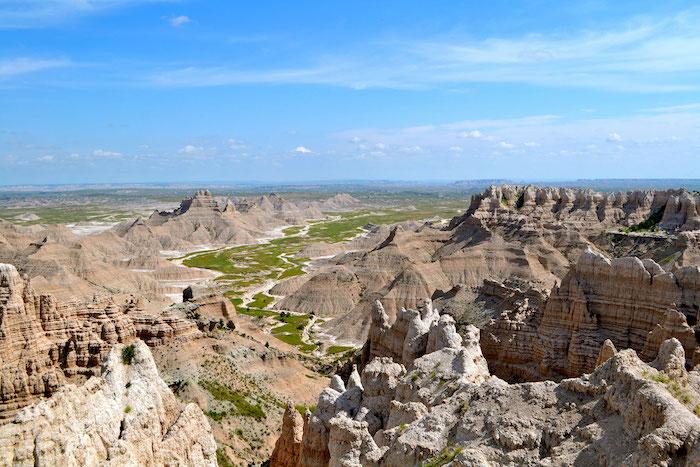
Climate change could drive Mountain bluebirds from Badlands National Park/NPS
Climate-Driven Species
As for Brown boobies, they were not reflected in the study as a newcomer to Channel Islands because the focus was on the potential shifting of species typically found now in the United States, said Dr. Gregor Schuurman, an adaptation ecologist with the Park Service's Climate Change Response Program who worked with Audubon's scientists on the research. But, he added, it's a good example of what the research is predicting.
“I think one could put it as a question: Why is the Brown booby in Channel Islands here in 2017?" he said during a phone conversation from his Fort Collins, Colorado, office. "I think an answer from folks who have kind of done the work that we’re doing is it’s certainly plausible that this has to do with unprecedentedly warm conditions, or other things that have allowed this species range to expand northward. We can’t point to our own study and say, 'Yes, there’s the entry in the table.' It’s not one of our species. So I would call it a bit more hypothetical. But it’s certainly consistent with the kind of modeling that we’ve done.”
The modeling in the study takes into account both high-level greenhouse gas emissions and low-level emissions and how they might lead to climate suitability for bird species in the National Park System by 2050. Much of the outlook hinges on the higher emissions level "because that seems to be the pathway we’re on now," Dr. Schuurman explained. Species data for the modeling came from both the North American Breeding Bird Survey and the Audubon Christmas Bird Count, the latter a 118-year-long community-based bird tracking project.
While Dr. Schuurman calls the study a rather straightforward, "fairly coarse-scale analysis" of climatic variables and shifts, it also should be viewed as thought-provoking, conversation-stimulating, and perhaps even disconcerting when you consider park landscapes under these climate changes.
Imagine, at Denali National Park and Preserve in Alaska, which is warming twice as fast as the rest of the country, "40 bird species could move in during summer. By 2050, Denali visitors may see forest birds like Western tanagers, Yellow-bellied Sapsuckers, and Rose-breasted Grosbeaks breeding in the park along with Magnolia, Canada, and other warblers seeking refuge in this cooler, northern forest."
Across the country in Shenandoah National Park in Virginia, while some species that breed in the park, such as warblers and thrushes, find the warming temperatures intolerable and head elsewhere, milder winter months might attract 43 species new to the park. "These include several birds, like the Common Yellowthroat and Vesper Sparrow, that currently breed or migrate through Shenandoah, and may begin wintering there, too," the study notes.
At Acadia and Voyageurs national parks, boreal chickadees might be seen only in birding field guides. Ring-necked ducks and Common loons could disappear from Biscayne National Park in Florida, though the Neotropic cormorant might decide to colonize the park. Yosemite National Park in California could lose the Great Horned Owl, but, hard as it might be to imagine, gain the Great roadrunner.
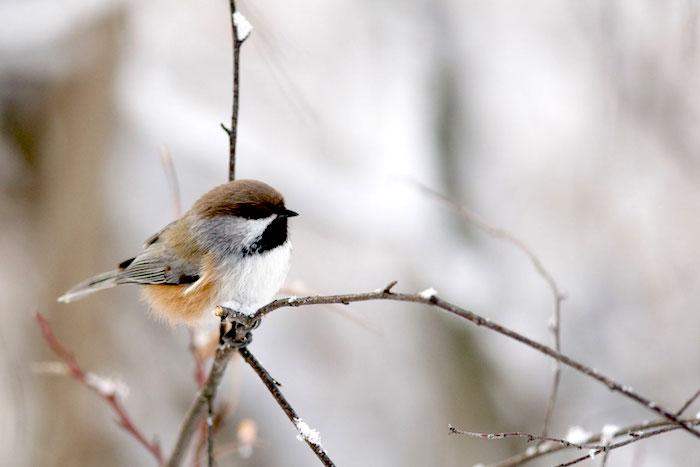
Boreal chickadees could vanish from Voyageurs and Acadia national parks/CalgaryBirder_Flickr CC BY 2.0
Symbiotic Ecosystem Change
But not only would birders in the parks have to recalibrate their expectations, ecosystems could be made over to a certain degree.
"On average, we’re talking about a large amount of change. One-quarter of the birds found in each of these parks, on average, is going to be a different bird in the future," said Dr. Chad Wilsey, director of conservation science for the National Audubon Society. "This is going to have ecological cascading effects and the potential to impact not just the birds themselves, but the ecosystems that may be influenced by them."
What sort, if any, of symbiotic relationship birds have with their surroundings could be altered by significant turnover in the types of species that make these parks home for all or part of the year, he said.
With Clark's nutcrackers expected under current climate projections to decline (if not vanish) in Yellowstone, Grand Teton, Great Basin, North Cascades, Mount Rainier, and Lassen Volcanic national parks, will another bird species step in to fill the role of "nature's gardener" that the nutcrackers have served, specifically in distributing the seeds of Whitebark pine? And if not, will squirrels be able to do just as good a job when it comes to reseeding the pines with their caches, or will that pine species also decline? And if it does, what about species such as grizzly bears that rely on the Whitebark's pinenuts as a valuable source of protein?
At Rocky Mountain National Park, will the possible loss of the migratory Bohemian Waxwing be offset by improving flocks of Cedar Waxwings? Will the Redwing blackbird be missed at Big Meadows in Shenandoah, and what changes might the Cattle egret bring to that park if it finds suitable habitat to go along with comfortable temperatures?
“There could be big changes coming, even in national parks protected from other impacts," said Joanna Wu, a National Audubon Society biologist who was the lead author on the paper that detailed the research. "We project an average turnover, or change in species composition, of 23 percent in the next couple decades. That’s a vast change in the number of species and their identities, so the ecosystem implications, it’s hard to predict, to be honest. First of all, it depends on which species that we predict to colonize or become extirpated would actually do so.
"Some may choose to adapt, or never make it to the parks that we say they may for other reasons," she added. "And then, of course, a whole new set of ecological interactions will come into play that we can’t fully predict. But suffice to say, some degree of change is definitely predicted for parks.”
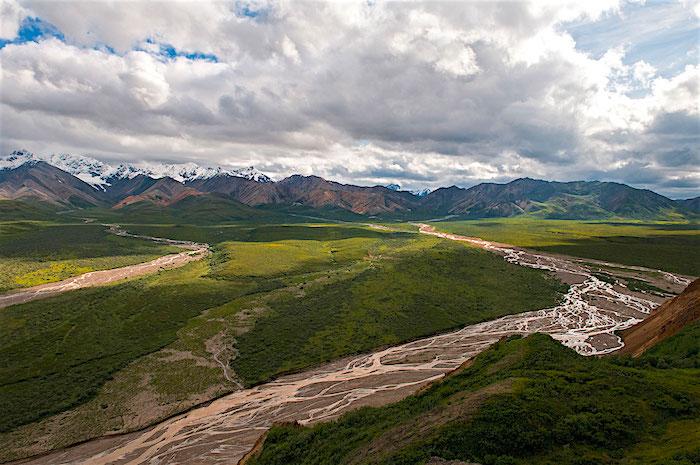
A warming climate could bring dozens of bird species not now in Denali National Park to the park by 2050/NPS, Tim Rains
And while park temperatures might change and become more suitable for some bird species, birds trying to adjust to climate change might pass up those parks if they lack suitable habitat.
"That’s kind of an interesting projection, for sure," Dr. Wilsey said of the predicted climatic suitability of the Grand Canyon for Anhingas. "A species that’s found more in the South, and associated with water. Again, we’re not saying definitively that these species will be there, but that the climatic conditions that are projected to be found in the Grand Canyon are similar to the climates that Anhingas are in today. So, it just tells you how much things are expected to change.
"... Certainly, we’re not trying to say that all these projections are guaranteed to come true," he added a bit later. "I think we just need to be open and acknowledge the fact that climatic conditions are one thing and habitat is separate.”
Will Refugia Shelter Species?
Also entirely possible is that microclimates could be found in some parks and create a refugia of sorts for species. According to research published back in 2014, "Between 10 percent to 28 percent of the world is located in potential refugia or less vulnerable areas. ... In the United States, up to one half of the National Park System is in potential refugia."
And back in 2012, a panel appointed by former Park Service Director Jon Jarvis to "revisit" the groundbreaking Leopold Report of the early 1960s noted that climate-change-proof habitats that can serve as refugia for species existed in the National Park System, which in turn could serve "as the core of a national conservation network of connected lands and waters."
"I think we absolutely expect those to occur," Dr. Wilsey said of refugia. "I think it’s just important to be aware that that is a way that species have adapted to climate change in geological time, and we expect them to do the same thing now."
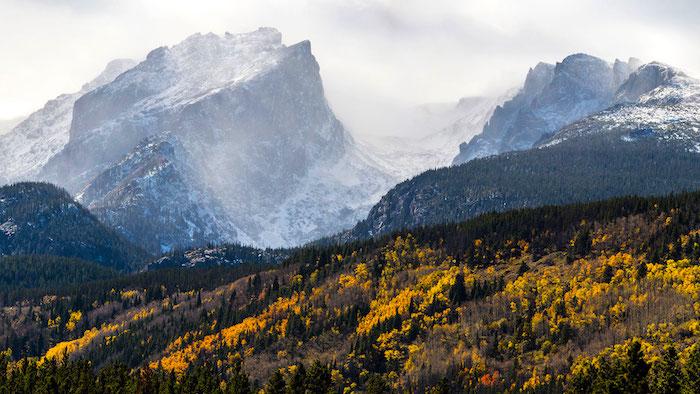
It's possible that refugia in parks, such as Rocky Mountain, could keep pockets of today's bird species in those parks as climate warms/NPS, Jacob W. Frank
Refugia, for example, might allow a specific species to "hang on longer than our models suggest," he said. "There will be places in our parks where smaller populations can hang on. That’s definitely one way that species will adapt to climate change."
Dr. Schuurman agreed.
"One of the things that we acknowledge in (the report) is that how and whether species respond to these changes will be governed by other factors. Right habitat availability, biotic interactions," he explained. "And one of the other ones we said was the availability of microclimates. So refugia are an important wrinkle that might influence how things play out."
A New Management Paradigm?
Something else that could be an "important wrinkle" is whether, and how, the National Park Service manages natural resources as climate changes. The agency long has been guided by the principle of allowing natural processes to play out. With that in mind, how active might the agency become in trying to manage their parks for specific species?
As the recent decision at Isle Royale National Park in Michigan to transport 20-30 wolves into the park with hopes they'll bring the moose population more into balance with the available vegetation shows, the agency's approach to be more hands on in that regard seems to be changing.
Indeed, in addressing "management implications" of the research, the report's authors suggest that, "(P)arks anticipating low change can best support landscape-scale bird conservation by emphasizing habitat restoration, maintaining natural disturbance regimes, and reducing other stressors. Furthermore, park managers have an opportunity to focus on supporting the ... species that are highly sensitive to climate change across their range."
Dr. Schuurman suggested that the Park Service needs to be open-minded in dealing with climate change and the issues it brings to their doorstep.
“On the one hand, these are challenging questions. On the other hand they’re really stimulating and fascinating and they do send you all the way back to fundamental questions, which you’re asking: What are we supposed to be doing and how does the world changing around our parks and in our parks influence that conception. This is tough stuff," said Dr. Schuurman.
“Gnarly issues," he went on, referring to "(T)hose issues related to management and adapting to ongoing and projected change in our resources where policy really doesn’t speak well to these circumstances. It doesn’t really imagine a world in which four out of five parks already are at the extreme warm edge or beyond their historical variability and temperature, and we’re already there today.
“This is very stimulating, and this is an opportunity when we have these difficult, gnarly conversations about gnarly issues. This is an important opportunity for us to think about how we’re stewarding resources and how best we can do it in this context.”
More details of the study and its findings can be found on the National Audubon Society website.



Comments
Ron, I agree with you, but then, I also know the history. The Environmental Movement has strayed mightily from its historical roots. As have colleges and universities. It's not just corporate America that is at fault. Are you following the case of Amy Wax at the University of Pennsylvania Law School? She dares to say that affirmative action results in the opposite of student success, and they throw her to the wolves.
Then there's California. The next thing you know, Jerry Brown will be singing beery choruses of the Bonnie Bear Flag and firing on Alcatraz Island. Who will be his P.G.T. Bureauregard? Good question. And isn't it about time we started asking a few?
A letter to the editor in THE WALL STREET JOURNAL this morning about Amy Wax reminded me of that wonderful quote from George Orwell. "The further a society drifts from the truth, the more it will hate those that speak it." The reason America is so divided right now is because we have lied to ourselves. We believe that if we give people enough, they will love us for it. Instead they only learn how to take.
In Seattle, I hear all the time about what I owe the takers. Do I owe them more children than they can afford? I do. Do I owe them a car they drive without insurance? I do. Am I entitled to question those policies? I'm not. How dare I question the City Council? If you own it, and we want it, you have to provide it--no questions asked.
We call it a sanctuary city. I call it a little piece of Hell. It's starting to look like Hell, too. And the people on these pages wonder why Donald Trump won the presidency? It's history. I wasn't "for" him, either. But that's where censorship leads, and what it breeds. I'm not angry at people for teaching climate change. If I were still teaching I would be teaching it myself. It's "real," but then so is the rest of it real. It's been going on forever.
The forever I worry about is the country. That has not been around forever. And we could lose it by just giving it away to people who "want" it. If Jerry Brown feels guilty that he lives in a wonderful country, he has every right to move. But if wants to fire on Alcatraz Island, I believe he should resign.
It is clear that Mr. Runte's thoughts on climate change - and human action in the face of it - have little basis in moral judgment or empathy. Indeed, they seem to be bound up in his own psychodramas.
Regardless, like many deniers, he has gone through the following phases:
1. It's not happening.
2. Sure, it's happening but we're not causing it.
3. Okay, maybe we're causing it but it's so big kid hat can't do anything about it.
Needless to say, this moral posture towards a global threat does not match his own behavior toward personal struggles. If it did, he wouldn't have sued after a denial of tenure nor would he run for public office as a perennial candidate. Clearly, he thinks some things can be changed or wound back.
Alfred, thank you for your response, points well taken, I would enjoy meerting you on a trail sometime to discuss further, not sure I should respond more, as this is a parks website.
Do you drive a car? Heat your home? Fly in airplanes? Own anything plastic? If your answer is yes to any of these, your moral posture towards a global threat does not match your own behavior. Climate change is happening. Few and certianly not the Doctor deny that. It always has and always will. The hard evidence that humans are a primary cause is downright non-existent. Many models have been produced based on that theory and they have repeatedly proven to be wrong. Which is why the faithful to the AGW religion have taken to manipulating the data and ostricise anyone that questions their beliefs or reaches different conclusions. It has the taste of the Christian persecutions of medevil times and the Islamic jihad of today.
This is, as the kids say, "concern trolling."
Empathy, now is it? Believe me, Rapporteur, I feel bad for everyone who doesn't live in this wonderful country. Now, how do you propose to keep it wonderful--more of the same I got from the University of Washington--a corrupt chairman of the department and corrupted tenure file? You bet I sued, and guess what the court said? I should have known there was something wrong with my file. The university was not obligated to be a moral institution; I was rather obligated to know they were a bunch of cheats.
Today, out of the 50 states of the Union--all with public universities--in 49 of those states the highest paid public official is either the football or basketball coach. Nor does the coach make a little bit more than the governor. He rather makes a pile.
You're right. You had better not tenure people who find that obscene--or any of the other Ponzi schemes in practice today. You got what you paid for--a university system that teaches nothing, and that goes for the complexities of climate change. Happening, not happening? That's not the question. Whether the question is how long this country can survive the cheating. And there history is betting not long.
in Al's defense, I fear that delving into his personal reasons for being a cranky former academic is far from discussing birds and climate change.
For me, I don't spend a lot of time reading scientific journals or, for that matter, political tomes from the left or the right on the subject. Every time I do, I just get fed up. What I do put credence in is the changes I saw living in Alaska for five years. I know that anecdotal comments don't hold weight in a debate, however what I see, holds weight with ME.
Well said, Rick.